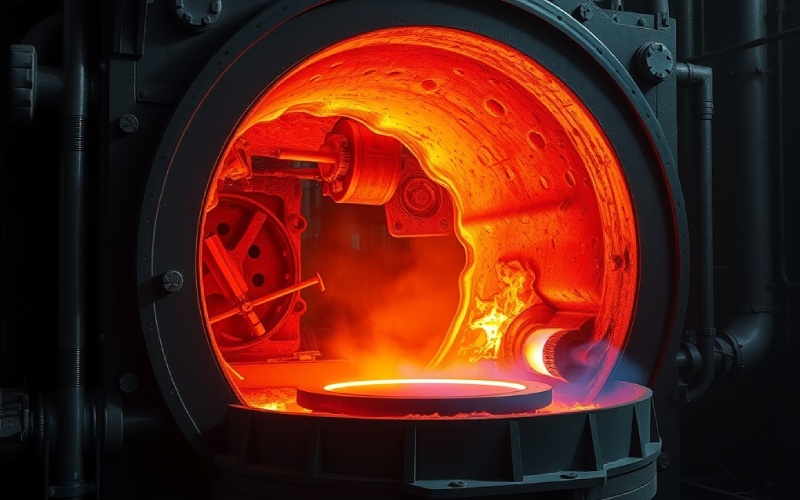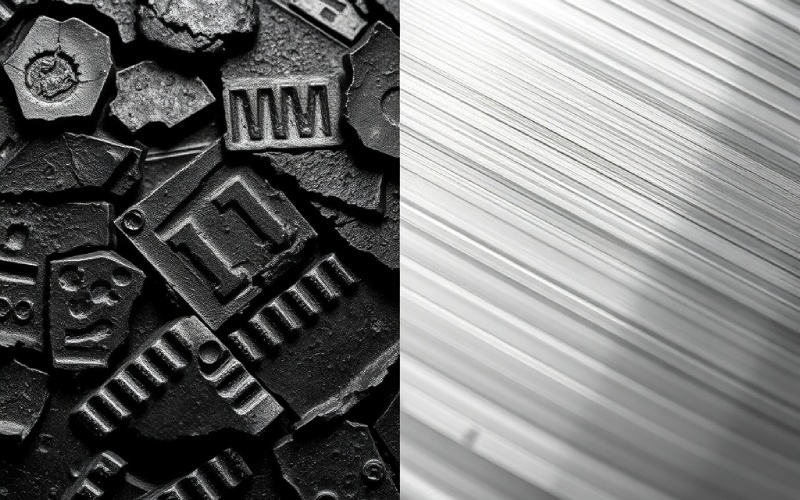Let Istar help you get started on your project with our experience and know-how!
Upload your design files and production requirements and we will get back to you within 30 minutes!

You can think of annealing as a relaxing day for metal. After a lot of stress and work, a little heat treatment can make it calm and easy to bend. It becomes ready to be made into something new. In this article, I will explain everything you should know about the annealing process. We will look at how it works and why it is so important. We will also talk about the different ways to anneal metal to get the exact features you want. This information will help you become a better craftsman, whether you are experienced or just starting out.
So, what is this “relaxing day” for metal? Basically, annealing is a heat treatment process. It changes the physical and sometimes the chemical features of a material. The main purpose is to make it more flexible, meaning it can be stretched or bent more easily. It also lowers its hardness. This makes the metal easier to work with. Think about bending a piece of wire back and forth. After a while, it gets stiff and then it breaks. This is because of something called “work hardening.” The annealing process is used to undo the effects of work hardening.
The magic of annealing happens on a very small scale. It involves heating a metal to a certain temperature. You hold it at that temperature for some time and then let it cool down. This heating and cooling lets the atoms inside the metal’s crystal structure move around and get organized. This gets rid of the internal stresses that built up when the metal was bent, rolled, or pulled. When you work with metal, you create many small flaws in its crystal pattern. The heat from the annealing process gives the atoms the energy they need to move around and fix these flaws. As the metal cools, a new and more even grain structure is formed. This is what gives the annealed metal its better features.
The annealing process has three main parts:
I have learned that annealing is one of the most useful heat treatments available. People who build things use annealing to make difficult parts because it keeps the material workable. When a metal has been worked on while cold, it can become fragile and easy to crack. The annealing process helps to fix these problems. This allows for more shaping without the danger of the metal breaking.
Annealing does more than just make metal easier to shape. It is also used to make a material’s machinability better. A softer metal with less stress is easier to cut. This can save time and make tools last longer. This heat treatment process can also make a metal’s electrical flow and magnetic features better. The even crystal structure that annealing creates lets electrons move more easily. So, the next time you see a complicated metal part or a beautiful piece of jewelry, it’s very likely that annealing was a big part of making it. This process helps to get rid of internal stresses in a metal that can appear from manufacturing steps like welding.
There are many different kinds of metal. In the same way, there are also different kinds of annealing processes. Each one is made for certain materials and for getting specific results. Knowing about the different types of annealing can help you pick the best one for your work.
Here is a table that shows some of the common types of annealing:
| Type of Annealing | Description |
|---|---|
| Full Annealing | This is a very common type of annealing, used a lot for steels. The metal is heated above its upper critical temperature. Then, it is cooled down very slowly. This process makes the metal very soft and flexible. |
| Process Annealing | This is also called intermediate annealing. This process is used to give some flexibility back to a metal that is being cold-worked. This lets you do more work on it without it cracking. |
| Stress Relief Annealing | This type of annealing is used to get rid of internal stresses. These stresses can build up in a metal from steps like welding or machining. The metal is heated to a temperature that is lower than in full annealing. |
| Spheroidizing Annealing | This process is used to make high-carbon steels easier to machine. It requires heating the metal for a long time. This creates a structure of round carbides in a ferrite matrix. |
| Diffusion Annealing | This is also called homogenization. This process is used to make the chemical mix in an alloy the same all the way through. It is done by heating the alloy to a high temperature for a long time. |
The type of annealing you pick will be based on the alloy you are using and the final features you want it to have. For example, you might use a partial or full anneal for alloys that cannot be heat-treated.

You may be asking which metals get to have this “relaxing day.” The fact is, many different metals and alloys can be made better with the annealing process. Some of the metals that are annealed most often are:
It is important to know that not all materials work well with annealing. Some very strong steels, for example, can become fragile if they are not annealed in the right way. That is why it is so important to understand the special features of the metal you are working with.
The main reason I use annealing is to change the mechanical features of a metal. The process makes the metal less hard and more flexible. This makes it easier to form. Think about trying to bend a stiff, fragile piece of plastic compared to a soft, easy-to-bend one. That is the kind of change annealing can bring to a metal.
This change happens because the annealing process makes the grain structure of the metal better. The cycle of heating and cooling helps new, stress-free grains to form. This recrystallization cancels out the effects of work hardening. Work hardening is when a metal gets stronger from being physically changed. By getting rid of the internal stresses and making a more even crystal structure, annealing helps stop the cracking and bending that can happen during other work steps. The process can also make a metal tougher, so it is less likely to break.
I have talked about the recrystallization temperature a few times. It is a very important idea to understand when you anneal metal. The recrystallization temperature is the temperature where new, stress-free grains start to form in a metal that has been bent or shaped. This temperature is not one single number. It changes based on the kind of metal and how much it was worked on while cold. Usually, the recrystallization temperature is about one-third to one-half of the metal’s melting point.
Heating a metal higher than its recrystallization temperature allows the recrystallization process to happen. The atoms in the crystal pattern get enough energy to move and make new grains. This is what gives the annealed metal its good features. The heating process has to be watched carefully to make sure the whole piece of metal gets to the right temperature. It is a careful balance. You have to get the metal hot enough for recrystallization, but not so hot that it starts to melt.
The cooling process is just as important as the heating process. How fast the metal cools down during annealing makes a big difference in its final features. For many kinds of annealing, especially full annealing of steel, cooling down slowly is very important. This helps to form a coarse pearlite structure, which is soft and flexible.
If a metal is cooled down too fast, it can create a harder and more fragile structure. This is the opposite of what you want from annealing. The cooling can be done in a couple of ways. Sometimes the metal is left in the furnace to cool down slowly. Other times, it might be cooled in the open air. The exact cooling way depends on the kind of metal and what you want the result to be. For example, ferrous metals like steel are usually cooled slowly in still air. But copper and brass can be cooled quickly by putting them in water.
I have mentioned work hardening before, but it’s good to talk about it more. It is the main reason we anneal metal. Work hardening, also called strain hardening, occurs when a metal is shaped by actions like bending, rolling, or pulling. This shaping increases the number of problems inside the metal’s crystal structure. This makes the metal stronger, but also less flexible and more fragile.
Think of it this way: when the crystal structure is neat and in order, the layers of atoms can move past each other easily. This lets the metal bend. But when you create a lot of problems, it’s like putting up many roadblocks. This makes it much harder for those layers to move. This is what makes the metal harder. Annealing is the process used to take away those roadblocks. The heat lets the atoms arrange themselves back into a neat crystal structure. This gives the metal back its flexibility and makes it less hard. This process helps get rid of the effects of work hardening.
Annealing has many benefits. They all help make a metal easier and more dependable to work with. Here are some of the main good points:

Annealing is a very useful heat treatment process, but it is not the only one. There are other heat treatments that are used to get different features in a metal. A common process that is often compared to annealing is normalizing.
Normalizing is different from annealing, which tries to get the most softness. Normalizing is used to create a more even and fine-grained structure in steel. It involves heating the steel to a higher temperature than in annealing. Then, it is cooled in the air. This makes a metal that is stronger and harder than fully annealed steel.
Another important heat treatment process is tempering. Tempering is done after a metal has been made hard. It is done to make it less fragile and tougher. It involves heating the hardened metal to a temperature below its critical point. So, annealing is about making the metal softer. Normalizing and tempering are about getting a good mix of hardness and toughness.
As you can see, annealing is a very important process in metal work. It is used in many different ways. It is a flexible tool that lets us change the features of a metal for our needs. Here are the most important things to remember about annealing:
By understanding how annealing works, you can have more control over the materials you use. This will lead to better and more dependable results in all your metalworking projects.